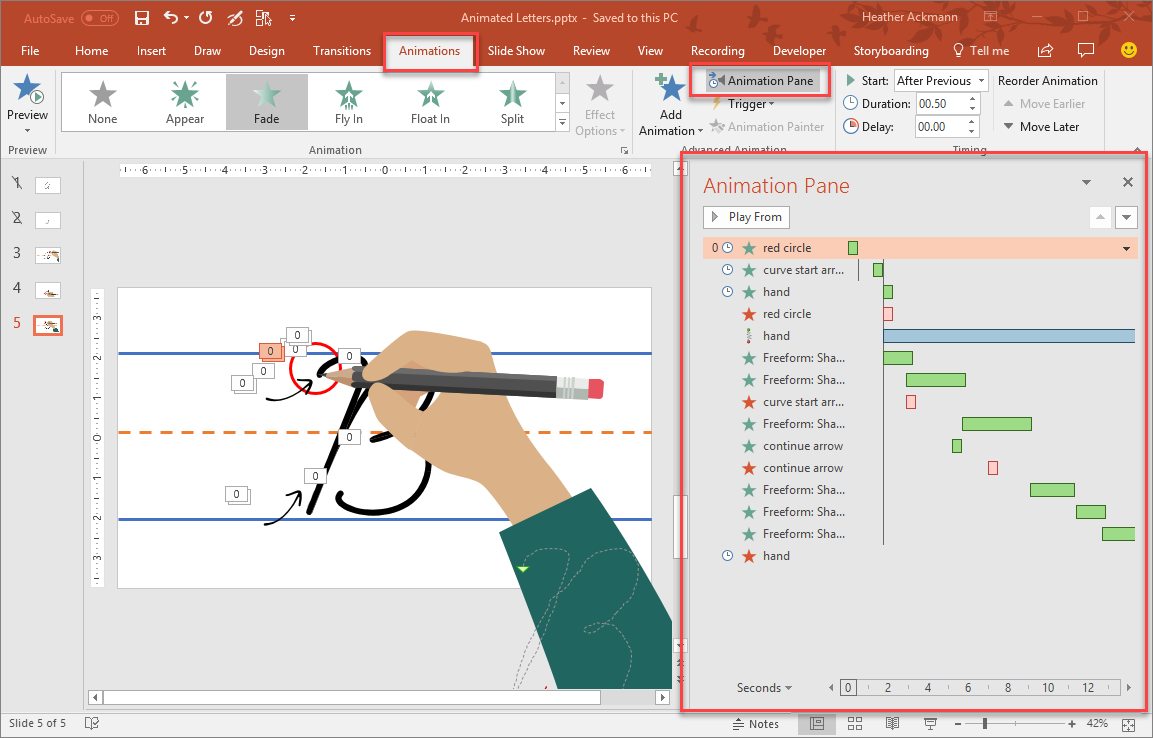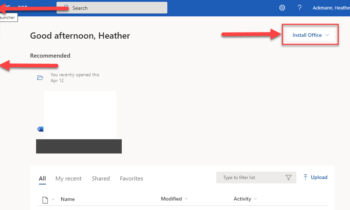If you are completely new to animation or are accustomed to animating in other more complex 2D animation programs, such as Adobe AfterEffects or even Animate, then the idea of animating in a program like PowerPoint is going to feel…well…let’s be honest, wrong.
Get over that feeling.
Animating in PowerPoint has its place and value. The program is cheap, the files are incredibly portable, and I bet you won’t find anyone in your office that doesn’t have PowerPoint installed on their machine, (that is, unless you work in one of those strange Google Docs offices…shutter).
Animating Any Object
No matter the object, be it text, a picture, or shape, you only have three basic “states” or effects that you have to worry about creating or applying to your object. They are…
- Entrance Effects
- Emphasis Effects
- Exit Effects
Entrance effects
 These effects control how an object enters the slide. When you apply this effect and then run a slideshow, your object will not appear until this effect plays. Then, and only then, will your object “enter” the slide at the time you specify.
These effects control how an object enters the slide. When you apply this effect and then run a slideshow, your object will not appear until this effect plays. Then, and only then, will your object “enter” the slide at the time you specify.
Emphasis effects
 These effects control what the object does while on the slide. When you apply this effect and run your show, your object will perform this effect at the specified time.
These effects control what the object does while on the slide. When you apply this effect and run your show, your object will perform this effect at the specified time.
Exit effects
![]() These effects control how an object leaves the slides. When you apply this effect, the object will “leave the stage” so to speak, or exit the slide, never to be seen again unless you apply another entrance effect.
These effects control how an object leaves the slides. When you apply this effect, the object will “leave the stage” so to speak, or exit the slide, never to be seen again unless you apply another entrance effect.
Motion Paths
![]() You’ll see another type effect listed called a Motion path, but I like to think of it as a subclass of a emphasis effect, as this type effect controls how an object moves around on the slide. So, basically, a motion path is like an emphasis effect. It moves an object in a particular direction on the slide.
You’ll see another type effect listed called a Motion path, but I like to think of it as a subclass of a emphasis effect, as this type effect controls how an object moves around on the slide. So, basically, a motion path is like an emphasis effect. It moves an object in a particular direction on the slide.
Timing Animations
By default, when you add any kind of animation to an object, the animation will be set to play “on click” in slide show view. That is because the developers of PowerPoint anticipated people presenting PowerPoint to audiences, using a clicker or mouse, wanting to “click through” boring little bullet points, one at a time.
That’s not how I roll, baby…
PowerPoint animation can be so much more than animated bullet points! You just need to move beyond the “on click” mentality.
Changing the start time
- To change the start time for any animation, the first step, is to navigate to your Animations tab and open your Animation Pane.

Trust me, the animations pane is your friend! It shows you all the animations you’ve added to all objects on your PowerPoint slide.
If you do NOT see the timeline view like I have shown here, just click on the black arrow to the right of any animation (or right-click on any animation) and select Show Advanced Timeline.

- Next, select any animation, and go up to your Animation tab on your ribbon, to the timing group, and where it says “Start: On Click,” select the drop-down arrow to open the menu and select a different timing option, either With Previous or After Previous.

With Previous
The “with previous” timing will time your object to animate WITH whatever appears before it on the timeline. If nothing appears before it on the timeline, then your object will animate with the slide transition.
After Previous
The “after previous” timing will time your object to animate AFTER whatever appears before it on the timeline. If nothing appears before that object on the timeline, then your object will animate immediately after the slide transition has finished.
And those are the basics to animating in PowerPoint. Beyond that, it is just a matter of combining those three basics effects: entrance, emphasis, and exit–which, yes, can get complicated even though it sounds so simple.
Using PowerPoint for Mac?
If you are using PowerPoint for Mac, then the above pictures and instructions probably won’t help you much as PowerPoint for the Mac is STILL VERY different. Many friends of mine who use Macs and PowerPoint, don’t use PowerPoint for Mac. They install Boot Camp and run Windows so that they can use the “good version” of PowerPoint, designed for the PC.
In fact, here is what PowerPoint for Mac looks like (version 15.17 (151206))

Granted, this is an older version of PowerPoint 2016, and I still need to test out functionality of animations in the most recent updates. From what I can tell though from Microsoft’s update history for Office 2016 for Mac, nothing has really been changed feature-wise for animations. Don’t quote me on that though, I need to investigate further and ask around. I am, after all, “a PC.”
In the version shown above, there is no “add animation” button, like on the PC (but I think I might be fine with that one). There is no button to remove or delete an animation once it is applied, and there is not obvious way to select a specific animation when there is more than two animations applied to one object.
Pictured above, I have 5 entrance animations applied to that first blue square but only the number one and two appear next to it, which seems to indicate that there are only two animations that were successfully applied. But when I previewed my animations, all five animations played.
But worst of all, there IS NO ANIMATIONS TIMELINE! It’s seriously like animating blind for someone like me who applies multiple animations per object, and times them in conjunction with other slide animations. As a user in PowerPoint, who regularly creates expert and complex animations, I have never felt so handicapped and useless in PowerPoint in all my life. But I am AWESOME with animations on a PC. The thing is, honestly, I don’t think this is a matter of a learning curve in a new or different program. But, I’ll have to test with other users and see (and practice a bit more myself).
Suggestions for PowerPoint? Don’t tell me, tell Microsoft!
If you would like to provide Microsoft with this or similar feedback regarding animations (especially the animation timeline), they take suggestions very seriously when it comes from a lot of users like you. So PLEASE, go here and tell Microsoft your wishes and desires for animation improvement, to make PowerPoint for Mac more aligned to the PC version, functionality-wise. And once you voiced your desires/wishes/complaints and voting on suggestions, then share your suggestions on your social networks to get your friends and colleagues to vote as well. There is power is numbers!
For suggestions on how to make suggestions on UserVoice, see this post.
Want More?
If you want to learn more about PowerPoint animation, I created a great in-depth course with Lynda.com and LinkedIn Learning that will walk you through all the intricacies of animating in PowerPoint 2016 on the PC.




